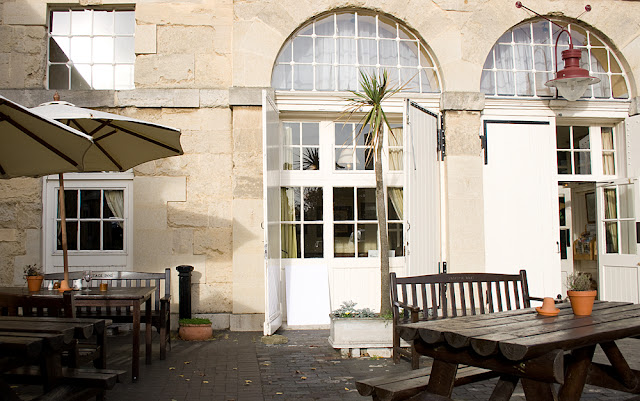To complete this exercise, to find the range between the darkest and brightest points I need to do the following :-
- find a scene with a distinctly high dynamic range
- bright sunlight
- one brightly reflecting surface
- an area of deep shadow with a dark surface.
An example given is a brightly lit house, a piece of white card/paper, an open door with a dark surface visible inside. Ensure the ISO sensitivity is at its lowest, and noise reduction in-camera switched OFF. Set the exposure and shoot so there is just no highlight clipping on the card.
I then need to measure and make notes about the brightness of the card and two or three of the darkest shadow areas.
To measure these areas I have the options of either :-
- using spot metering
- zooming in to the maximum
- walking close to the area I want to measure so that they fill the frame.
For this exercise I decided to keep my aperture the same and note the shutter speeds, therefore I need to make sure I know what my increments are. Following the adoption of a standardized way of representing aperture so that each major step exactly doubled or halved the amount of light entering the camera (f/2.8, f/4, f/5.6, f/8, f/11, f/16, etc.), a standardized 2:1 scale was adopted for shutter speed so that opening one aperture stop and reducing the shutter speed by one step resulted in the identical exposure. The agreed standards for shutter speeds are:
1/1000 s
1/500 s
1/250 s
1/125 s
1/60 s
1/30 s
1/15 s
1/8 s
1/4 s
1/2 s
1 s
To get my readings I walked closer to the areas I wanted to meter. I'm uploading this image but to be honest I think I may need to shoot a different scene. The reason being my shadows were not that deep and the darkest areas (the windows) when I zoomed in on them did not display any noise, so although I can calculate a "range" I think it is not the full dynamic range of my camera.
 |
| Image with white card just showing clipping |
 |
| Shutter Speeds all metered at f5.6 |
 |
| Zoomed window showing no noise |
Using the white sampler eyedropper in ACR and zooming to 100% the values on each channel for the white card read R 252, G 251, B 254.Using the exposure slider I regained details in the cream paintwork on the window frames and the doors/shutters, the bright reflecting window remained clipped.
The slowest shutter speed was 1/10 which was the dark inside (this is a 2/3 of a stop below 1/15) the fastest shutter speed was the white card with metered at 1/1250 (which is 1/3 of a stop over 1/1000) the dynamic range of this scene is therefore 7 stops. However as there is no noise in the darker areas I can only presume my camera has a larger dynamic range and I will have to experiment to find an alternative scene with darker shadows.
Having said that I don't think it is too far out as a review on a website found that the 400D produced a consistent dynamic range of 8.4 with ISO 100-800 and 7.8 at ISO1600.
http://www.dpreview.com/reviews/canoneos400d/page19.asp
Useful website :o)
Understanding Shutter Speed | Basic Photography | Digital Photography Magazine | Illustrated Photography
Understanding standard shutter speed stops and my camera's dynamic range should help me correctly expose images. Practise will hopefully make perfect and therefore enable me to reduce clipping and the need for too much adjustment in post production.
No comments:
Post a Comment